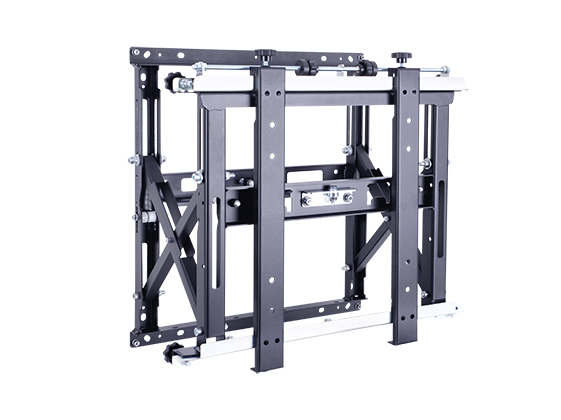Videowall: how to choose the best configuration

Videowall: 5 key elements
- Location
- The type of display-user interaction
- Contents
- The type of monitor
- Supports and brackets
Location
The position in which the videowall is installed is one of the most important aspects to take into consideration. Usually, even the ‘smallest’ video wall configuration is around 2 metres in size. This is why it is best to prefer installations high up or where it can be clearly seen from afar. Above all, care must be taken that there are no visual obstacles such as trees, buildings, poles, posters that obstruct the view of passers-by.
When choosing a location, it is also good to take into account how easily it can be reached in the event of maintenance work and at the same time how protected it is from vandalism or accidental blows.
The type of display-user interaction
Another factor to consider is the type of interaction you expect your audience to have with the video wall content. Is it content that requires the person to stop and read what is shown on the screen, or is it emotional images and videos that do not require the user’s attention?
In the first case, it is perhaps a good idea to prefer screens that are no brighter than 500 nits and installed at eye level so as not to force the passer-by to stand with his nose in the air. Clearly paying attention to the relationship between size and viewing distance.
In the second case, displays with a higher brightness can be opted for, and the installation can be done in height if the video wall is large. In this case, care must be taken that the distance from which the video or image will be viewed is sufficient to do it justice and that the person can see it in its entirety.
As a general rule, the larger the video wall, the greater the distance must be to allow for easy reading of the content.
Contents
The type of content to be transmitted should also guide the choice of monitor type and configuration. If you want to use the video wall as a large display, it will be better to opt for more traditional configurations (1×2, 2×1, etc.). If, on the other hand, you want to use it as a mosaic of different types of content, you can also envisage more creative, different compositions.


The type of monitor
The most important choice certainly concerns the type and technology of monitor. As we mentioned above, it is important to take the distance-to-size ratio into consideration.
Larger videowalls require a greater viewing distance to fully exploit their effectiveness in communicating. If they are installed in places where the monitor is seen from a few metres away, an exaggerated surface area is useless because the person will have a limited view anyway.
Another aspect to take into account is the frame. There are video wall monitors with frames of varying thickness (ranging from 10 mm to 0.4 mm). However, it is always good to prefer those models defined as ‘bezel-less’: displays with an ultra-thin, almost invisible frame. In the construction of multi-monitor walls, they ensure a greater effect of continuity, giving the impression that it is one large monitor rather than a mosaic of smaller monitors. The cost rises but the final performance gains considerably.
Supports and brackets
Be sure to choose specific brackets for this type of installation. These are the push&pull models. A type of bracket that is designed for video walls in that it allows the monitor to be pulled out of the wall (for maintenance or repairs) simply by exerting pressure on it. This is essential in order to have freedom of manoeuvre and easy access to the back of the screens.

